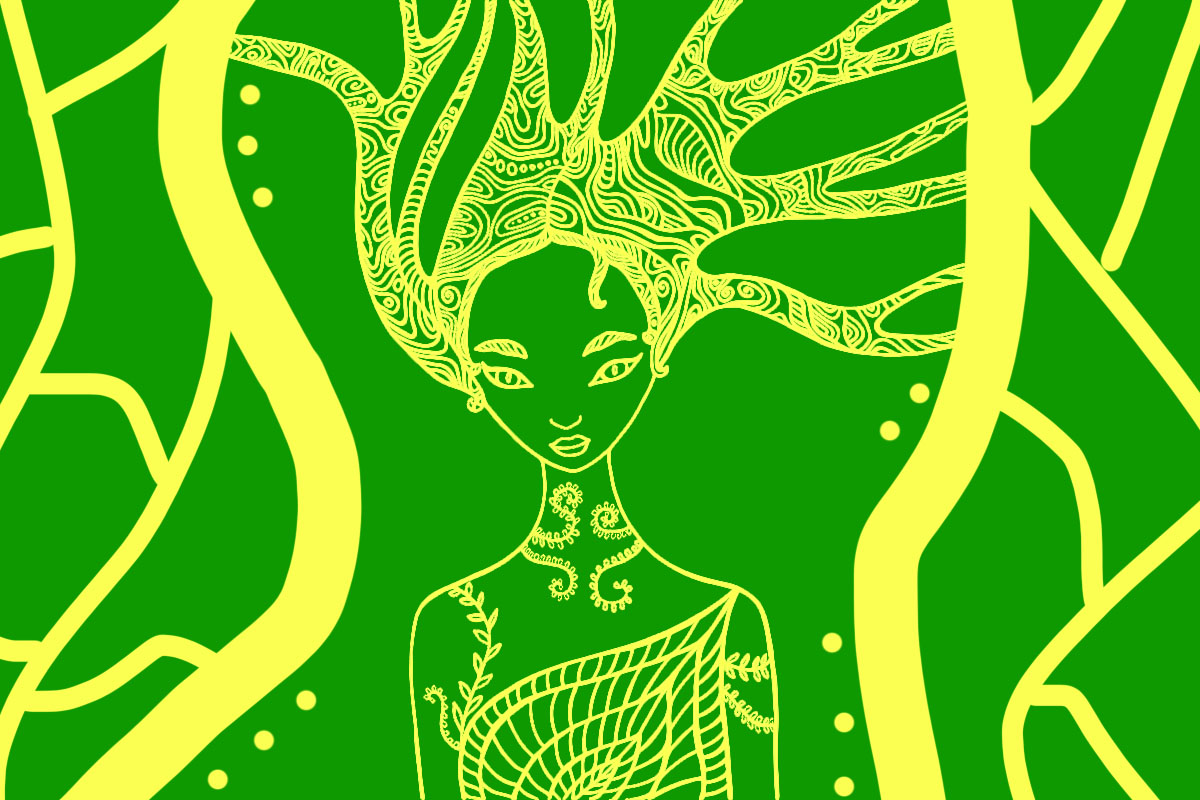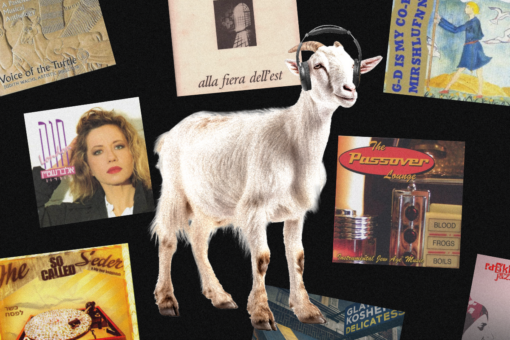Remember that time when Jews used to worship a tree goddess? No?! I do! Her name was Asherah and she was a tree!
Okay, maybe she wasn’t exactly a tree goddess, and maybe she wasn’t exactly worshipped by Jews. But we do have many references throughout the Bible to Israelite worship of a feminine deity named Asherah, a Canaanite goddess represented by a living tree. As Jews are about to celebrate Tu Bishvat, commonly referred to as the “Birthday of the Trees,” I thought it was high time to talk more about this arboreal goddess.
Asherah was the name of an Ancient Near Eastern goddess, also referred to as Lady Asherah of the Sea, Mother of the Gods (AKA a way more badass version of Daenerys Targaryen!). In ancient Canaanite religion (the ancient pagan practices of the people who lived in the land of modern day Israel/Palestine), she was the wife of El, and later Ba’al, and gave birth to the rest of the Canaanite pantheon.
As the story goes, when the Israelites entered Canaan, they encountered and, naturally, picked up on many of the Canaanite traditions, Asherah included. Women especially were drawn to Asherah-worship. All throughout both Books of Kings, we read of Israelites turning towards and away from Asherah worship.
We first get reference to Asherah in the Book of Exodus, but the clearest biblical statement about her is from Deuteronomy 16:21, which reads “lo tita l’cha asherah kol etz etzel mizbeyach YHVH asher ta’aseh lach; Do not plant for yourself an Asherah of any tree next to the altar of YHVH that you make for yourself” (my translation). This commandment is telling the Israelites to not plant a tree representing Asherah — teaching us that the Israelites knew that Asherah was represented as a tree — next to the altar of YHVH (Adonai, Yahweh, Eternal God, Ruler of the Universe, God… you know the one). And why does the Torah command us not to plant Asherah next to God? Because we were already doing so!
In the Books of Kings, we read of Israelites planting Asherah trees next to the altar of God. Over and over again, Israelites plant Asherahs in their temples, and over and over, other Israelites tear them down. Basically, for hundreds of years, Asherah worship just skipped a generation.
Finally, a seriously monotheistic Israelite king named Josiah comes in, with his High Priest Chilkiyahu, and decides it’s time to burn down the goddess once and for all. (Spoiler alert: He fails.) He and his army scour the countryside and cut down, burn, and violently destroy every image of Asherah they can find.
While the Bible categorizes this as a win for Yahwistic monotheism (AKA what eventually becomes Judaism), archaeological findings have shown that Asherah worship persisted long after Josiah’s religious reforms. All through the Judean countryside, small statuettes of a half-woman, half-tree (whole Asherah!) appeared at the time of Josiah’s reform. These Asherah figurines would have been kept on private altars in Israelites’ homes.
Eventually, Asherah worship faded away, alongside many other idolatrous practices. Monotheism won, and God was reimagined not as a singular male warrior God, but as an infinite, eternal, non-gendered/all-gendered God. But, as we know from every piece of Jewish art we’ve ever seen, the Jewish obsession with the sanctity of trees has lived on.
The transition from Asherah-as-tree-goddess to trees-as-metaphor-for-divinity happens clearly in the Book of Proverbs. Wisdom (AKA Chochmah AKA Lady Wisdom) is embodied as a goddess-like character, meant to be understood metaphorically. Today, we chant a verse from Proverbs 3:18, “Eitz chayyim hi l’machazikim bah v’tomcheha me’ushar, She is a tree of life to those who hold fast to her and her supporters are blessed,” as we return the Torah to the ark, implying that the Torah is the tree of life.
Here’s a fun fact: The word me’ushar, meaning blessed or happy, is linguistically linked to the word asherah! They have the same Hebrew root, aleph–shin–reish, and, therefore, we can understand that this verse is explicitly bringing Asherah, our beloved tree goddess, into the folds of Jewish thought by reimagining her gift of blessings within the monotheistic context. When we call the Torah the Tree of Life, we are bestowing the blessed power that we once understood to be Asherah onto the most sacred teachings, our Torah, and onto ourselves.
On Monday, we will be celebrating the Jewish holiday of Tu Bishvat, the new year for the trees. Traditional Tu Bishvat celebrations include a seder, kinda like the one on Passover, where we celebrate the natural world and its gifts to us. And so, this year, consider celebrating Tu Bishvat, and uplifting the holiness and sacredness of our natural world, by channeling our ancient Asherah goddess power. You can go out into nature, literally #hug_a_tree, or however you find works best for you.
Image by Olga Tupikina/Getty Images



